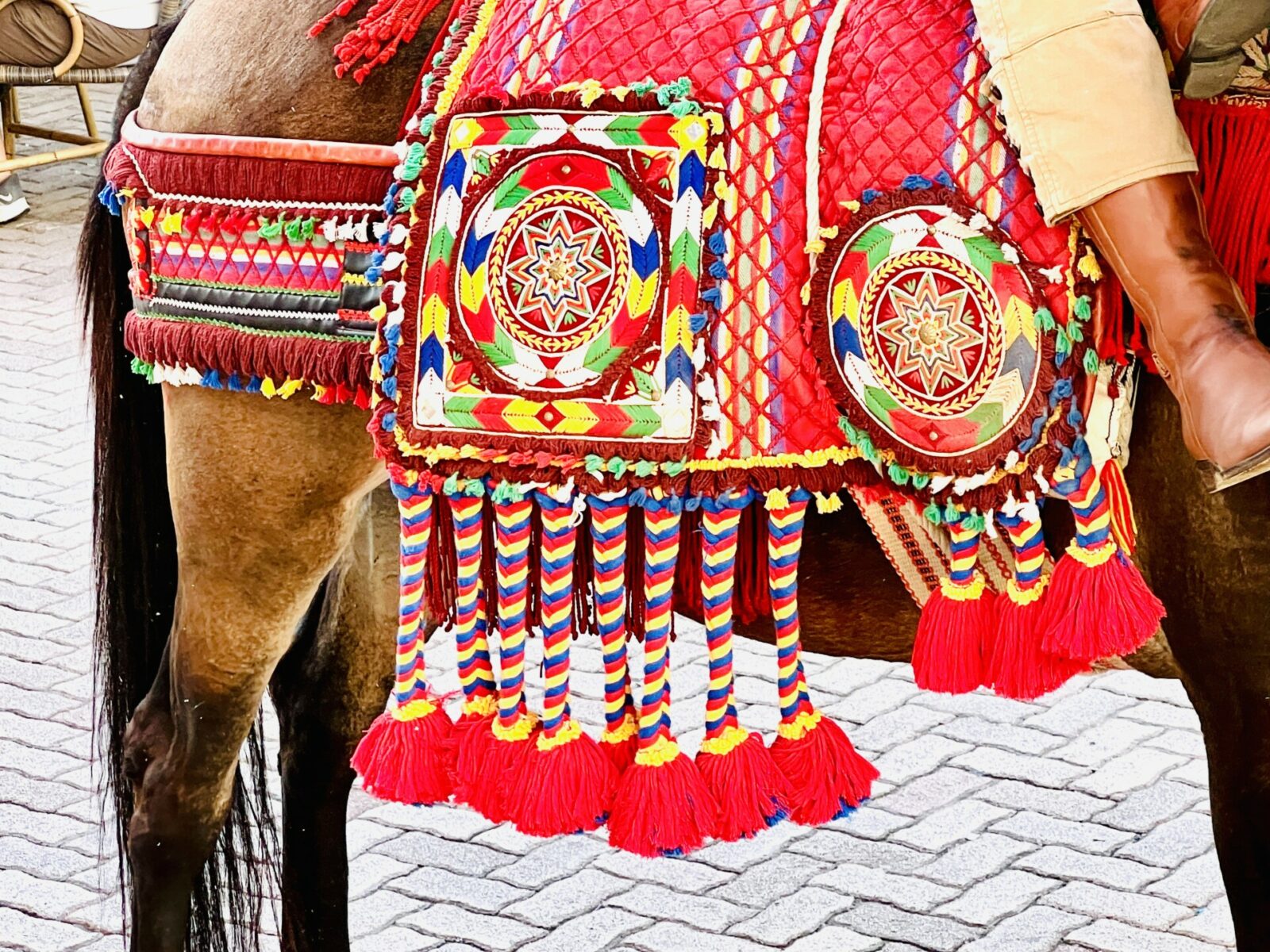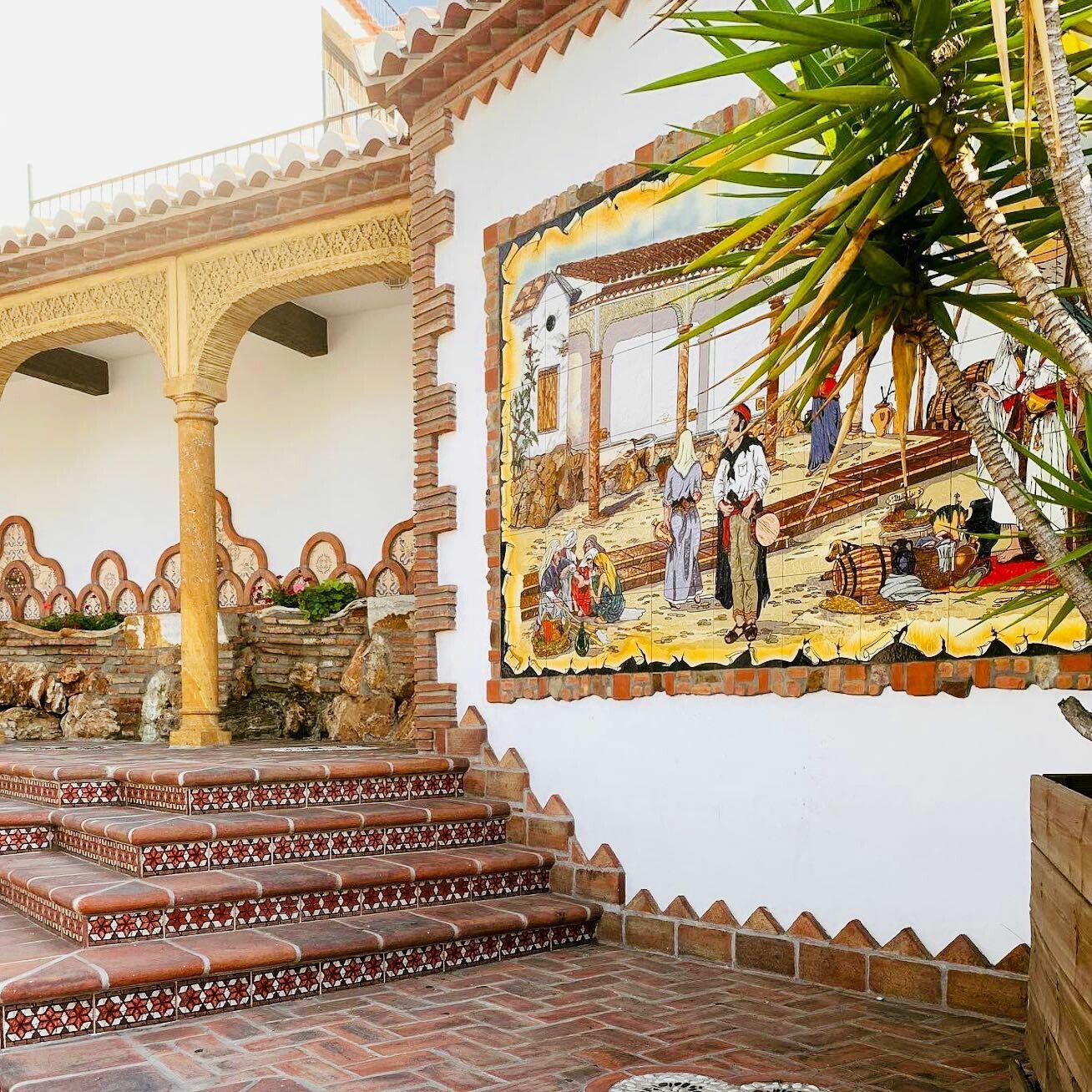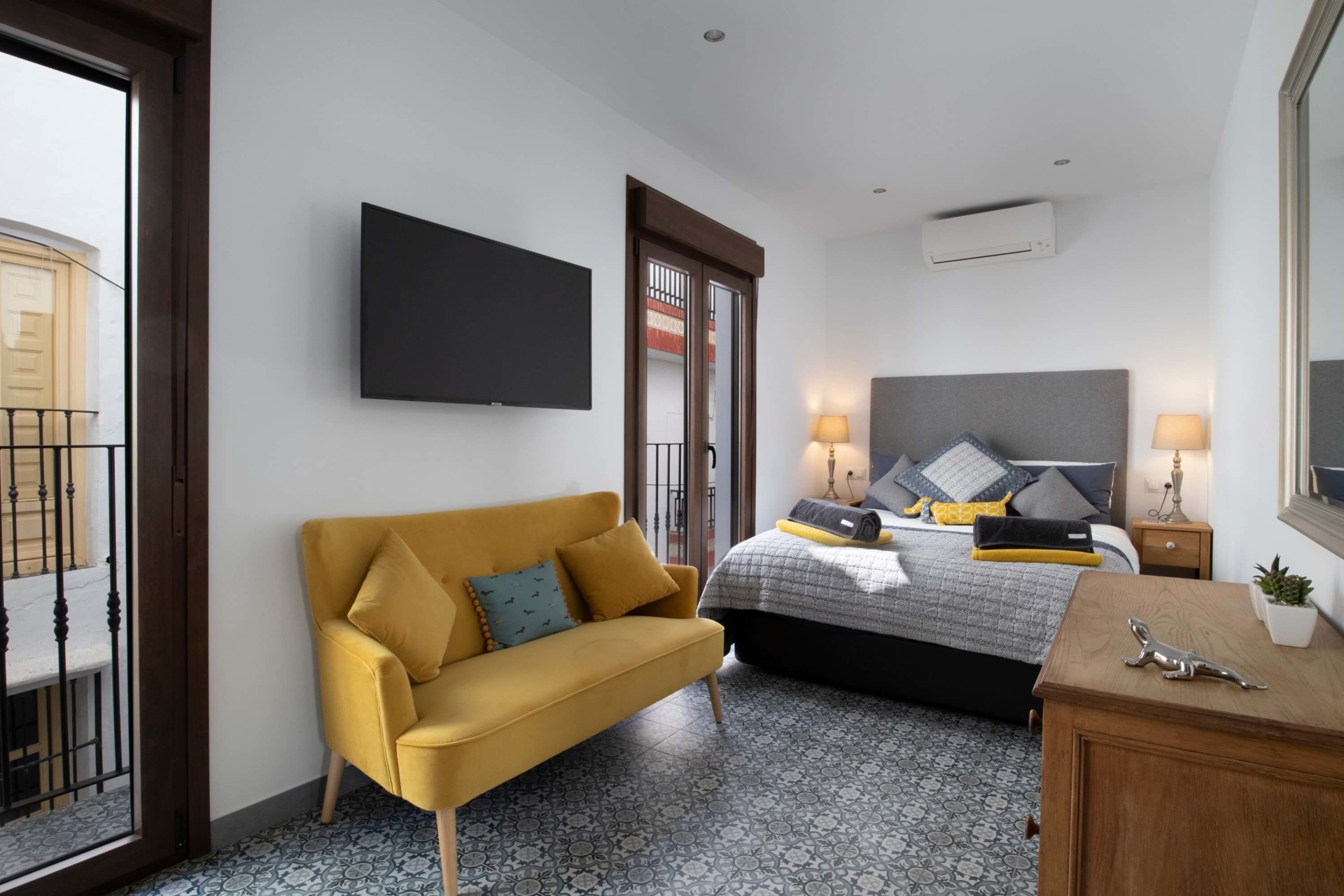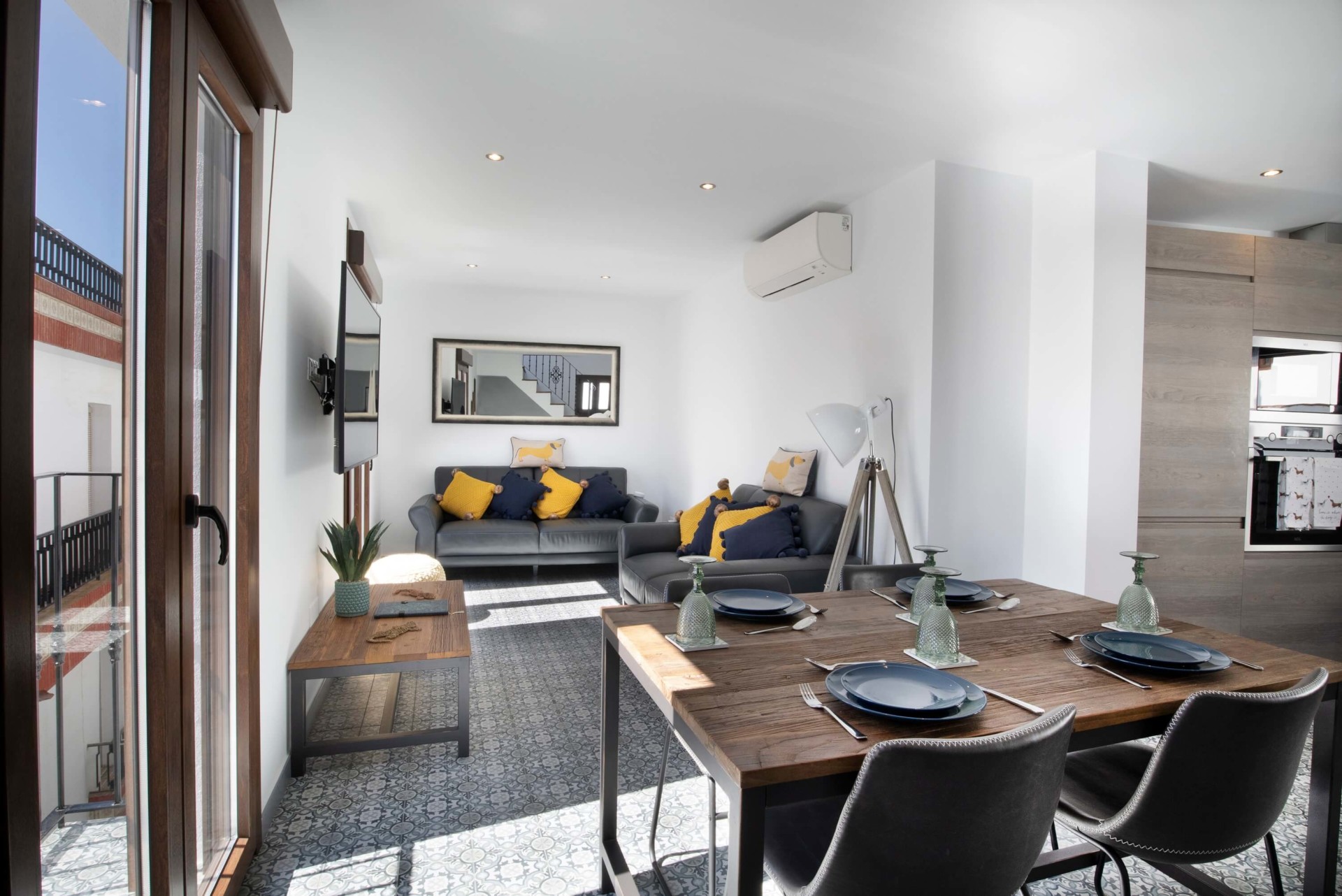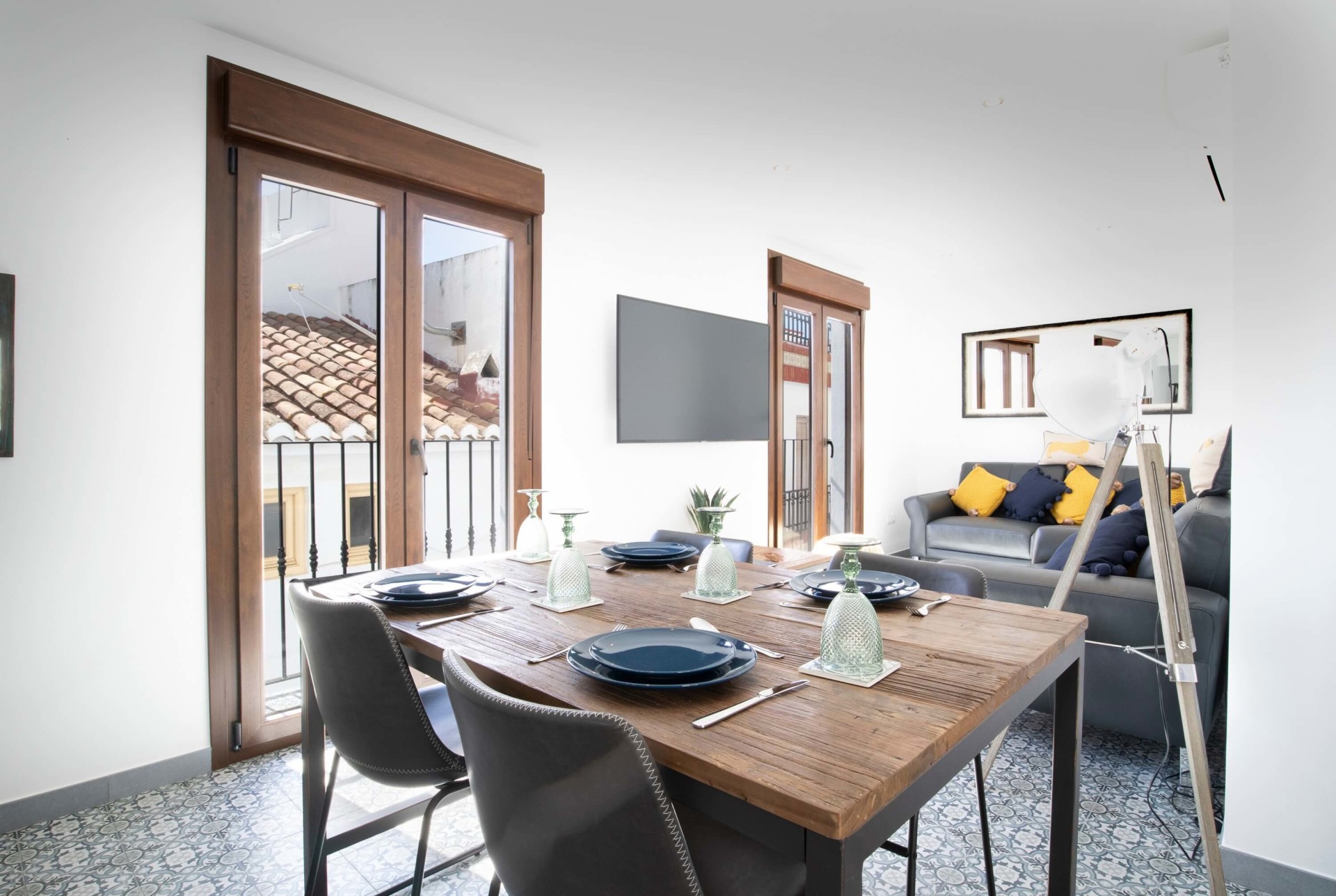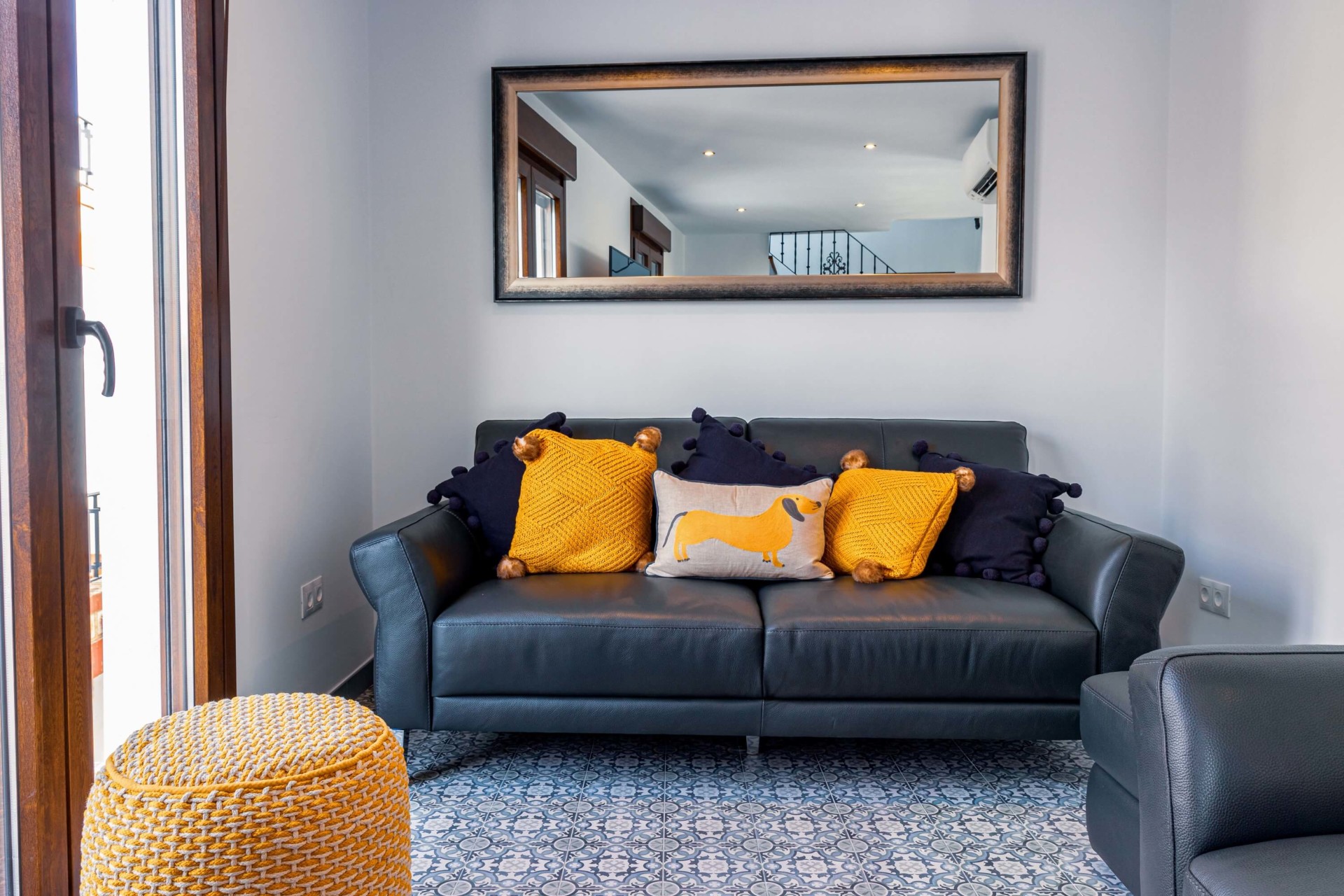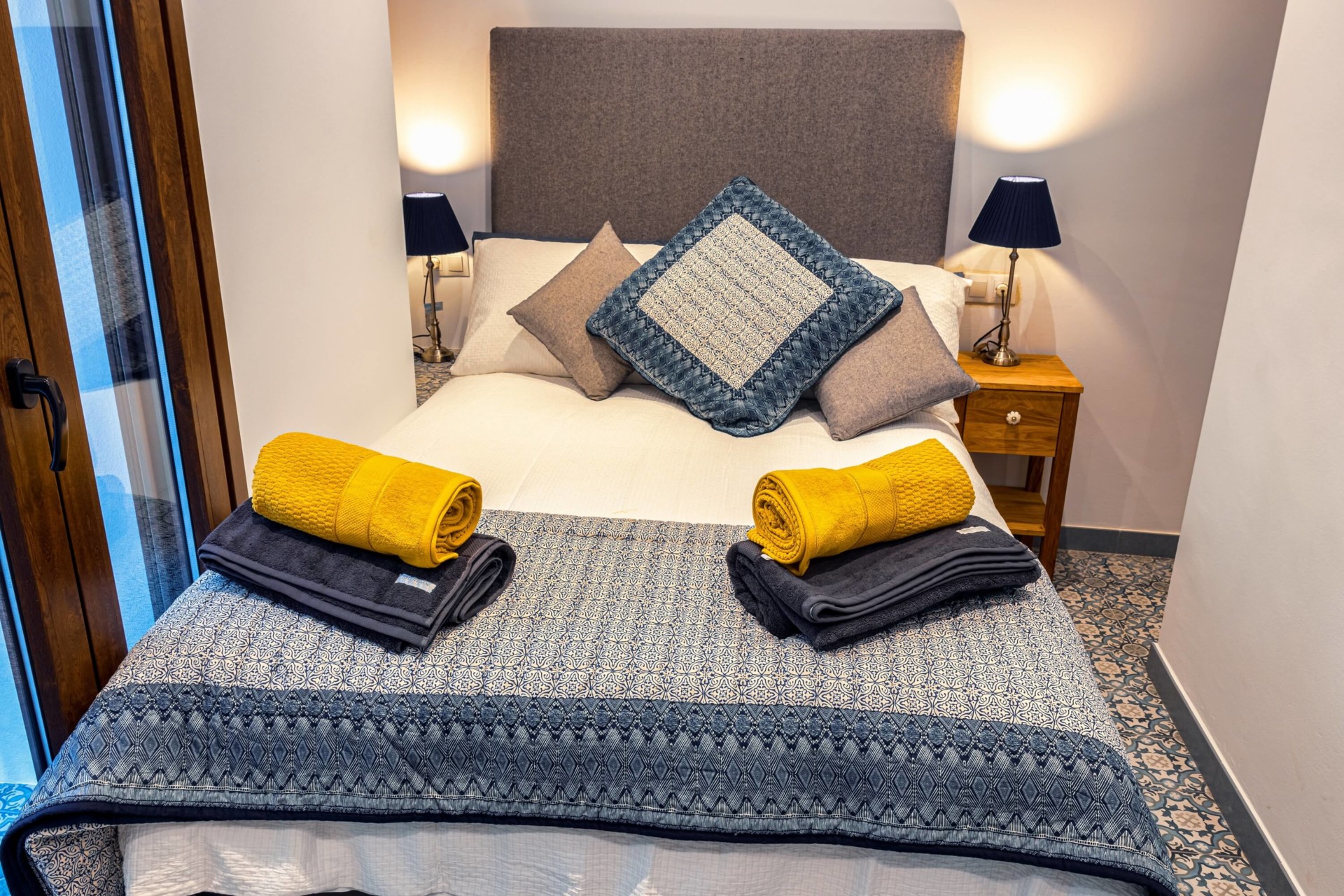With its al fresco lifestyle, Spain is the perfect place to try some of their favourite drinks!
Spain is the home of outdoor living. In normal times, families meet together outside on the terraces of bars and restaurants – no one is left at home!
Yes, it’s noisy and lively but it is a fantastic and friendly atmosphere and that is our favourite thing about life in Spain.
In Competa, the camareros (waiters) dance by your tables and greet you with a friendly ‘hola chicos’ (hey guys) and really make you feel welcome.
Eating out is a joyous experience, whether it is a full-blown celebration or rounds of tapas that accompany your drinks. In some area’s tapas are served free with your drinks.
One should also be aware of Sobremesa, translated literally as ‘on the table’. This refers to after dinner (or lunch) conversation and typically lasts for half to an hour, even longer in the summer or during holidays. A time to relax and chat, enjoy a coffee or digestif. Your server will not bring your bill (la cuenta) unless you ask for it, it would be considered rude to hurry a post-meal chat. Cool eh!
When in Spain order like a Spaniard
In Spanish, it is normal when ordering your drinks to be a little more direct than in say the UK. It’s not rude; it is just the way it is.
The following phrases are really very common: –
Dame – Give me – dame una cerveza – give me a beer.
Quiero – I want, if you really feel uncomfortable then perhaps ‘quisiera una cerveza’ – I would like a beer.
Tomo – I’ll take or Me pones, un cerveza – I’ll take a beer.
Unusual maybe but not rude, it is just the natural direct way of the Spanish, just ask for what you want with a pleasant tone with a smile.
If you find this unnatural or peculiar then ‘Para mi, un gintonic por favor’ – for me a gin and tonic please.
It’s nice to say Gracias (thank you), when your drinks are brought to you. If you want to order some more then ‘dos mas, por favor’ (two more, please) or otra ronda (another round)
So, what should you order?

Gintonic
The Spanish request a gin and tonic as gintonic. Often thought of as a British drink, this drink is just as popular in Spain. In fact, it is said that the Dutch invented gin (Jeneva), the British added tonic and the Spanish added the garnishes and gave it the flair. It is normally served in a Copa de Balon (balloon glass) which originated in Spain.
There are plenty of tonic varieties available, our current favourite is Nordic Blue (actually made by Coca Cola). It’s more aromatic than the original and has a touch of bitter orange, grapefruit and kumquat. It looks stunning in the sun and is very refreshing too.
A word of warning take care with Spanish measures! They pour freely, no miserly 25ml measures here! You are more likely to get 75-90ml, in fact your drink will look like its ready, even before you pour the tonic! Legend says the Spanish pour is 5-7 seconds

Beer – Cerveza
Spain has been brewing beer for 5,000 years and is the 4th largest producer in Europe. It is the 11th largest producer in the world. Much of it is produced domestically with Mahou-San Miguel and Damm accounting for 80% of the market in Spain.
Spanish production is typically lager of around 4-5.5%. That said, craft beers are starting to be seen more and more and vary in flavour and strength. Sin (low alcohol) beers have been around in Spain since the 1970’s and they now offer a really good variety.
In Spain they like their beer cold, it is not uncommon for a large beer to be served in a frozen glass. Draught beer is often served with a large foam head. Beer tends to be served in smaller glasses, here is how/what to order (though it does depend by region too):-
Una caña – a short glass, a little under half a pint, with the added of advantage of staying cool until you have finished.
Ask for Un tubo – if you want a tall thin glass
Or Un tanque – normally the largest glass available
Una botella – bottle of beer.
In need of something lighter, then order Una Clara – a beer mixed with lemon soda or lemonade. Order it ‘muy clara’ if you would prefer more lemon than beer.
If you fancy doing a wine tour – our local Nomadic craft beer factory, Cervezas Almijara will fit the bill.
Un chupito
A chupito is a shot, often offered on the house at the end of your meal. Popular offerings in Competa are Toffee Vodka, Limoncello, Baileys or Amaretto.

Sangria
There are two trains of thought on how the name Sangria came about. Many believe it is linked to the Spanish word for blood, ‘Sangre’. Others believe that it originates much earlier and is linked to the Sanskrit word ‘Sakkari’ meaning sugared wine. Both options are certainly very plausible.
Traditionally Sangria was made from red wine, various chopped fruits such as apples, peaches, melon or berries – even bananas find their way in. The fruit and wine are steeped with sugar. More recently, you will often find a version of Sangria with red wine swapped out for dry white wine – often known as Clarea. We have even seen it served with Cava, Sangria de Cava.
Sangria recipes vary greatly, with some choosing to add cinnamon sticks and alcoholic liqueurs to up the alcohol content. Take care it is very moreish and sometimes known as falling down juice.
You will find that you rarely see Spanish people drinking Sangria in bars and restaurants!

Tinto de Verano
As popular as Sangria (particularly with the natives) but a simpler drink. Tinto de Verano translates as wine of summer. Normally served with a carbonated soda, ‘gaseosa’ sometimes called Casera (the most popular brand) or if you ask for ‘tinto con limon’, it will come with Fanta, Sprite or 7-up. Generally, it is served over ice, with a slice of lemon or orange. We definitely prefer the lemon version.

Vermut
Vermouth (Vermut) is popular in Spain. It is an aromatized white wine, with herbs and flavourings added. The darker sweeter vermouth has the addition of caramel giving it, its colour. We love Vermouth in a Negroni. Head to our favourite Malaga bar, Casa Lola to try a variety of Vermut based drinks.
The Spanish style of Vermouth is very aromatic, using over 100 different herbs giving it a unique botanical flavour. It is considered more aromatic than both Italian (sweet-red) and French versions (dry-white). Paul loves the bitter, sweet almost acidic taste, but I have yet to find one I like.

Vino
Vino Tinto, blanco, rosado – red/white and rose wine.
Competa is of course famed for its fortified Muscatel wines. So much so that it celebrates Noche del Vino, night of the wine annually in August – read all about it here in our blog. If you are coming to Spain in August, it is definitely worth adding to your calendar.
It is also the home of Bodegas Jarel, the pueblo sits on the sun and wine route. Ole trips offer a great tour which includes the vineyard tour, find out more about them here.
You can read more about how Competa wine is made here in a blog by our friends the TopsyTurvyTribe.
Our favourite place for a glass of chilled Spanish white or rose wine, is on the beach with a plate of Espetos (grilled sardines).

Cava
Is as good as champagne and in our opinion, better than Prosecco. In order to be labelled as a ‘Cava’ the wine must be produced using the Champenoise method, wines not produced in this way are regarded as ‘sparkling wines’ About 95% of Cava production is from the Penedès region in Catalonia. A DO status on the top, demonstrates production in Catalonia and stands for Denominación de Origen
Cava is produced in a varying range of sweetness from the dry Brut to the sweet Dulce. Try it, we think you will like it and we much prefer it to Italian Prosecco.

Café
There are various types of coffee served, here are some of the most popular terms to help you get along.
Café Solo – translates as just coffee -an espresso
Americano – A long espresso with more water
Café con leche – an espresso, with a lot of milk
Cortado – an espresso ‘cut’ with less milk
Café bonbon – coffee with condensed milk, very sweet
Carajillo – an espresso with whiskey, rum or brandy and a little sugar
Café con hielo – an espresso, served with a glass of ice that you pour it over to make a cold coffee.
Un descafeinado – a decaf coffee.
Our preferred after dinner drink is Un café solo y Baileys con hielo, separado. An Espresso and a Baileys with ice served separately and then mixed at the table – delicious! Another delicious choice is a La Mumba – hot chocolate with Spanish brandy!
Read more on ordering coffee in Spain and the types of coffee Spain has to offer here

So, we hope you will try some of the popular drinks in Spain..
We hope you have enjoyed our short guide to some popular Spanish drinks – do you feel ready to order? Don’t try them all at once – or you may find yourself needing the phrase ‘estoy borracho’ – I am drunk. Remember in Spain, it is a marathon not a sprint when it comes to drinking – enjoy your exploration.
We would love to know if you try out any of the suggestions above.
Thanks for reading – if you have enjoyed our blog and would like to know more about Competa or our luxury holiday home rentals with private pools – please take a look at our website .




